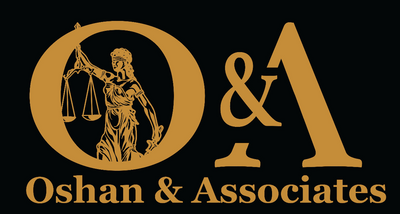Product liability refers to the legal liability of concerned manufactures for producing or selling a defective products. Product liability law exists primarily to protect the interests of consumers.
Manufacturers of consumer products are obligated to ensure that their products are safe for use by consumers. The products are expected to conform to accepted standards and quality requirements. Manufacturers are obligated to provide instructions for the safe use of their products. And they must warn users of risks associated with using a particular product.
The essence of this law is to ensure that consumers are safe at all times. This is why if you have consumed or used a defective product that caused you injury, you may sue under the law.
Forms of Product Defects
Product defect is used to refer to a ‘fault’ in a product. A defect is any characteristic of a product that hinders its usability for the purpose it was made or manufactured. Three essential forms of defects have become recognized under law. These are:
Manufacturing defects
This is a defect that arises when a product has not been manufactured according to its design. The defect may thus render it dangerous or ineffective.
Manufacturing defects are not part of the risk inherent in a product. They only arise due to an error in production or on the assembly line. Usually, these types of defects affect only a small part of the manufactured products of a company.
In this instance, the manufacturer will be strictly liability for the defects in the products. This is regardless of whether or not reasonable care was taken during the manufacturing process.
All that is needed to be established here is that the alleged defect existed at the time of departure from the factory where the product was manufactured or assembled.
Design defects
A design defect concerns the manufacturing of a product in violation of some specifications. In this instance, the product was faulty from the outset. Unlike in manufacturing defects, a design defect is a flaw in the original blueprint of a product and affects all the manufactured products. This defect has thus rendered all the products unreasonably dangerous or hazardous for potential users.
In attempting to resolve the question as to whether a product has a design defect, three questions are usually asked:
- Was the design of the product unreasonably dangerous prior to production?
- Would it have been reasonably expected that the design of the product could harm a potential user?
- Could the manufacturer have avoided the defect by using a superior design that was economically feasible and that would still not modify the purpose of the product?
The answers to these questions would determine whether a consumer has a legal recourse to a design defect claim. Even more, answering them will require access to manufacturing blueprints and official documents that only a skilled attorney can get to.
Failure to Warn
Failure to warn arises from the duty imposed on manufacturers and distributors of a product to warn consumers of potential risks inherent in the use of a product.
Admittedly, there are some products that come with potential usage hazards or flaws. The manufacturer is however obligated to warn consumers about these risks and to also provide sufficient safety instructions.
Failure to warn can also arise out of a marketing agenda. If a product, for instance, is advertised to do a thing which it cannot in reality, a manufacturer may be held liable under product liability laws.
In effect, a product liability lawsuit can be brought against a manufacturer for failing to warn its consumers of potential risks or for marketing issues. Thus, liability is imposed:
- If warnings or instructions could have prevented injury from potential risks. or
- If the warnings or instructions themselves, after being followed properly, caused an injury.
Regulations as to Warning Labels
When there is a duty to warn, manufacturers are expected to abide by necessary guideline. The warning label guidelines of the American National Standards Institute (ANSI), specifies standards to be followed for product warnings.
The standards stipulate that warning signs must be easily readable. They must be comprehensible, offer detailed explanation, and must illustrate the safety risks with images. According to ANSI, a warning label must inform the consumer about the:
- Existing hazards in the product;
- Severity of the risk involved with a particular product;
- Effects of the hazard on the consumer; and
- Information on how to avoid the inherent hazard.
The agency also specifies that a warning must be made highly visible. It must be positioned as close to the area of the hazard as much as possible. Also, the label must be made to endure the particular life expectancy of the product.
Three color-coded keywords have been designed by the ANSI to alert the consumer of inherent hazards in a product:
-
Red – Danger: This is to signify the occurrence of an impending hazardous event that will end in serious injury or death.
-
Orange – Warning: This signifies a potentially hazardous event that may end in serious injury or death.
-
Yellow – Caution: This is the potential occurrence of a moderate or slight injury assumed with the hazard.
The ANSI provides further details on how the hazard warnings must be laid out. One of the color keywords together with the description of the hazard, must be plainly printed on a square white background to enhance visibility.
Underneath the keyword, the section of the description label should be broken down into two panels. The panels will contain:
- A symbol or graphics section. For instance, a red circle with a slash-through to depict an act of carelessness; and
- A message section highlighting information pertinent to the hazard.
How to Determine Whether a Warning Label Is Adequate
In situations of a failure to warn, inadequacy of the warning label may give rise to liability. To determine whether the warning label was adequate, the following must be considered:
- Whether it was likely the product would cause harm;
- Whether the manufactured product was used for the purpose and in the manner it was intended;
- The severity of the injury sustained;
- The simplicity, clarity, and comprehensibility of the warning; and
- The level of presumption the manufacturer made on the experience and knowledge of the user.
These factors would determine whether or not a manufacturer has liability, and to what extent they are to be held accountable.
Food Poisoning and Product Liability
Product liability claims on food-borne illnesses and food poisoning is now on the rise. A consumer may file a claim against the producer of such food or any party that handles the food during transition or retail.
The big problem with food poisoning and product liability cases involves connecting the injury suffered to the food. In many cases, the food will have been consumed or disposed of before food poisoning or injury manifests.
If the food consumed can be examined, the better. Otherwise, in proving food poisoning, you will need other evidence. For instance, samples of food from the same batch can help show the defects. It will also require you to establish the evidence of bacteria or microorganisms in both the victim and the food supply.
An experienced product liability attorney at Oshan and Associates can help you to gather the required evidence for your product liability claim.
The Hazards of Defective Products
Defective products can result into various types of injury which range from the uncomfortable to severe. They may also render the victim disabled (temporarily or permanently) or even result in death.
The law allows individuals hurt by these products to file for monetary damages. This means if you or your loved ones suffer a manufacturing, design or marketing defects injury, you can institute a claim to get damages.
Types of Product Liability Lawsuits
Product liability lawsuits are classified based on the cause of the legal action. There are generally three genres of product liability lawsuits:
Negligence
What is required is to establish that carelessness in the design or manufacturing of the product led to the injuries suffered. Negligence may cover several defaults on the part of the manufacturer.
These, for instance, may include being negligent in the drawing or review of product plans. It could cover use of machines responsible for fabricating various components of the product or failure to inspect the product sufficiently. It could also cover releasing the product to the market without due consideration. In these cases, it must be proved by the consumer that:
- The defendant had a duty to sell a safe product.
- The defendant breached this duty. A “breach of duty” exists if the plaintiff can prove that the defendant knew or should have known that the product was defective.
- That the defective product is the cause of the injuries sustained.
Strict Liability
Strict liability is the imposition of liability on a party without a finding of fault (negligence or tortious intent). This means all you have to prove here is that a defect in a product exists and that an injury was sustained as a result of injury.
If the defect is established, the manufacturer may be held strictly liable for any resulting damage. It is immaterial here that extreme caution and care were exercised in the manufacturing of the product.
Notably, for the full operation of the rule of strict liability, the product must have been purchased in the recognized chain of distribution.
Breach of Warranty
A warranty is a form of ‘assurance’ that the manufacturer or seller gives on the condition of the product. This may either be an express or implied warranty.
An express warranty is a representation as to the product and its safety by the manufacturer or the seller. An implied warranty, on the other hand, are certain assurances that though not expressly stated by the manufacturer, are presumed to be so stated and established. There is an implied warranty for instance that the product, if used as intended, will not cause any harm.
The breach of these assurances will afford a consumer, or group of consumers, the right to initiate a product liability case.
When Does a Mass Tort Arise?
A mass tort is a civil action instituted by numerous plaintiffs against a common defendant. If a defective product affects a large number of people simultaneously, a mass tort or class action suit may be instituted.
In mass tort on product liability, a small group of people will represent the majority of people affected by the same defendant.
Mass Tort differs from Class Action suits. In mass tort claims, the injuries suffered by the plaintiffs, unlike in class actions suits, don’t have to be the same. In mass tort, each plaintiff will have to prove the facts of their own case.
A mass tort is used often for situations when the amount of damages each plaintiff gets would be nominal. In such cases, the potential value of an individual suit would not outweigh the legal costs involved.
Entities That Can Be Held Liable in Product Liability Cases
If an injury has been suffered, you can file a claim against a number of people connected to the product. Each case depends on its own facts. An injured consumer can file a suit against more than one liable party. These may include the manufacturers or distributors (wholesale or retail).
Importantly, a distributor, though not involved in the manufacture of the defective product can be held liable for damage. This is because the distributor has offered the implied condition that the product is safe and suitable for use.
Effectively, any party involved in the chain of distribution of a defective product may be held liable. In instituting a defective product liability case, it is essential to include all the parties involved in the chain of distribution.
Damages Recoverable in a Product Liability Lawsuit
Damages for injuries in product liability cases are generally compensatory or punitive. Upon the successful establishment of liability, you may become eligible for damages to cover medical costs (present and future). You may also recover for lost wages, pain and suffering or even emotional anguish.
Compensatory Damages
Compensatory damages are the sum of money awarded to reimburse a plaintiff for the damage, injuries, or loss suffered. This compensation is often intended to make the plaintiff “whole” after the accident or injury. They may be special or general.
Special damages are awarded to reimburse the plaintiff for calculable out-of-pocket expenses or financial losses. These include payment for medical and hospital bills or for lost wages.
General damages involve reimbursing the plaintiff for losses that cannot be easily calculated. Compensation for pain and suffering, mental anguish, future medical expenses fall beneath this category. Also, the value of future lost wages, loss of consortium, loss of peaceful enjoyment of life fall here as well.
Punitive Damages
Also called exemplary damages, these damages are awarded as a form of punishment for reckless or negligent behavior of the manufacturer. Punitive damages may also be awarded if the court considers compensatory damages inadequate.
Even though the essence of punitive damages is to punish the erring manufacturer or distributor, the plaintiff will receive all or a substantial part of the monetary award.
Proving a Product Liability Case
Proving liability in product defect cases, as with many other cases, is not a straightforward process. For instance, it may be difficult to prove product liability where the function of the product is inextricably linked with its inherent danger. Take a knife for example. The inherent danger in a knife is its sharpness. But if this is removed, the knife becomes unfit for use.
In cases like these, establishing that you have a right to compensation for injury will be difficult. Despite this, it is still possible to hold the responsible parties to account. And it all starts with retaining the right lawyer.
How Oshan and Associates Can Help
Most defective product cases are very technical and complex in nature. Having competent and experienced defective product attorneys on your side is important.
The Attorneys at Oshan and Associates will not only help you determine whether or not you have a case and the parties to be held liable, they will also be involved in gathering the required technical evidence.
Get in touch with the team of experienced personal injury lawyers at Oshan and Associates to set up your initial consultation. We will be delighted to help you learn more about your rights and the potential outcomes for your claim.
Click here to schedule a free consultation or call us on (646) 421-4062 today. You may also contact our Seattle Office at (206) 335-3880.
























